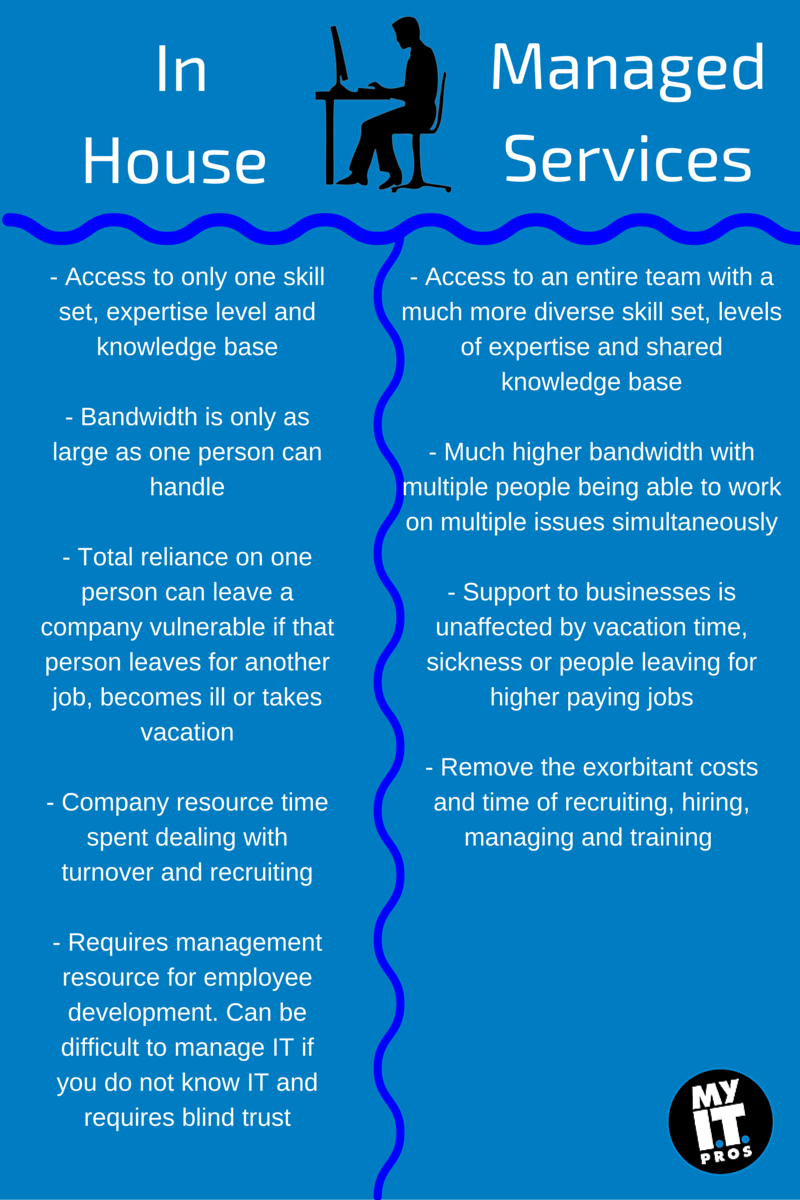
When planning an IT strategy, many business owners wrestle with whether to hire a dedicated in-house IT staff or choose a third-party partner. For most, it comes down to cost (if you’re struggling with IT budgets, check out the first post in our series). We’ve found that a lot of small-business owners assume that a managed services provider (MSP) will be exponentially more expensive, as well as lacking the transparency associated with in-house employees.
But is that really true?
Let’s examine the costs of having an IT support staff versus hiring an MSP.
In-house costs
Someone with a systems engineer skill set and three to five years’ experience would be an appropriate hire to meet the needs of the average business.
How much would that salary typically be?
You’re looking at a ballpark figure of $72,000 per year. However, that’s just a base salary. There are a lot of overhead costs associated with each person on payroll, including (but not limited to) taxes, insurance and benefits, and per-head IT costs. This works out to around a 20% to 25% markup on that base salary.
This brings the total for in-house support to about $85,000 to $90,000 per year.
Managed services provider
For comparison, we are using the real pricing that MyITpros would offer a client.
Our average-sized small business client has about 40 users. We always recommend our ProCare plan (click here for more information on our plan options), which would cost $4,500 per month. Unlike with in-house staff, there are no additional subscription costs involved with hiring an MSP.
This brings the total for managed services to about $54,000 per year.
Note: You may encounter some additional fixed costs with MSPs, associated with things like new hardware or an office move. But with MSP pricing being around half that of in-house, it’s unlikely you would ever exceed the cost of a full-time staff member when using an MSP.
The bottom line
Judging by numbers alone, it seems that having a third-party IT resource makes the most sense for business owners. But what exactly are you paying for with an MSP versus your own support staff? Do the benefits of having someone on payroll outweigh the costs?
We understand that sometimes, having someone on staff is beneficial. These individuals can be more hands-on, are able to contribute to overall company culture and have a higher level of business involvement than an MSP. They may be even more valuable if they can be leveraged across departments. However, relying on an in-house employee essentially boils down to putting all your IT eggs in one basket. Ultimately, an MSP will offer a much more extensive level of support for a fraction of the cost.
The purpose of this blog, and this budget series, is to answer the questions you ask! Check our blog next week for the third installment of our IT by the numbers series, where we break down exactly what you’re paying for when you hire managed services!




